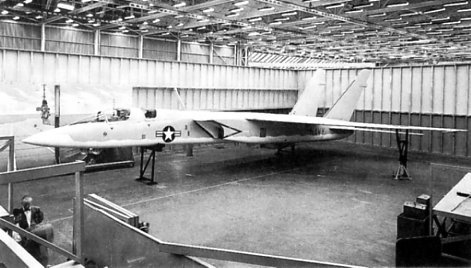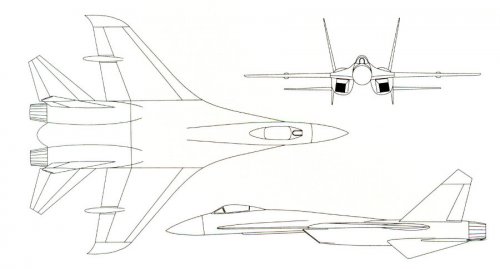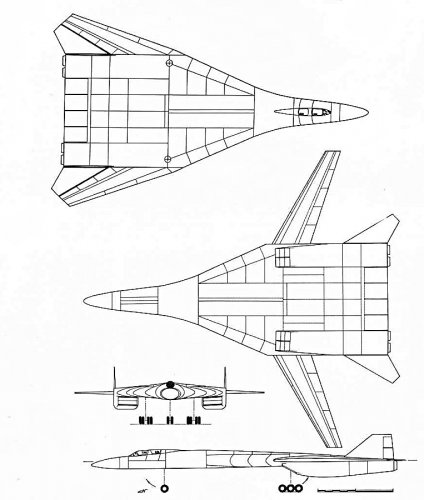Sukhoi's Scientific and Technical Information Cell held copies of foreign magazines, and reviews and digests by TsaGI, NIIAS, TsIAM, VIAM, translated foreign articles and maintained files dedicated to specific aircraft. These files were particularly popular with the general layout (later, design) team. There was an FX file, of course, but like all the files at Sukhoi it was almost entirely made up of information from public Western sources.
The T-10 design started in November 1969 when Oleg Samolovich, head of general layout, tasked one of his designers, Vladimir Antonov, with coming up with a new fighter design. Antonov's day job was on the fixed wing T-6, but he worked on some aerodynamic and layout ideas. Oleg Samolovich recommended looking at Leonid Bondarenko's T-4MS layout, then achieving lift/drag ratios of 17.5 in wind tunnel tests and which general layout Sukhoi had patented ("took out inventor's certificates") in July 1969. He also suggested looking at the sinusoidal wing concept published in a 1960 issue of British journal "Aircraft Engineering" which had demonstrated a vortex bound to the wing almost to the wingtip.
Antonov has some reservations on the applicability of a large bomber layout to a fighter design, and investigated different aerodynamic and layout ideas including LERX.
As he struggled to make headway on integrating these ideas, in January 1970, perhaps in response to the FX award to McDonnell-Douglas on 23 December 1969, Oleg Samolovich (T-4, T-6, T-8 layouts), Vladimir Antonov, Leonid Bondarenko (in charge of T-4/T-4MS) and Valeriy Nikolayenko (in charge of T-6 (Su-24)) all came to work over a weekend to hammer out a design. The work done that weekend allowed Antonov to come up with the very first fully worked up T-10 layout in February 1970.
Sources:
Oleg Samolovich, Next to Sukhoi (1999)
Pavel Plunsky, Vladimir Antonov et al Su-27 Fighter, Beginning of Story (Be & Co, 2005)
Ildar Bedretdinov, Strike-Reconnaissance Aircraft T-4 (Be & Co, 2005)













